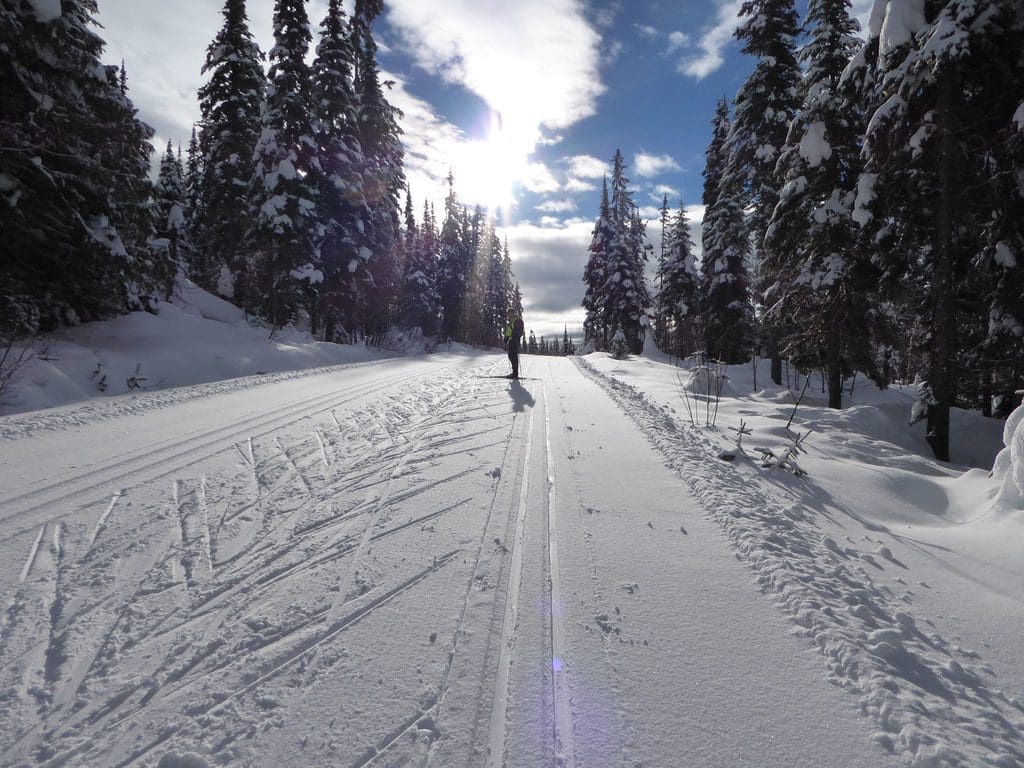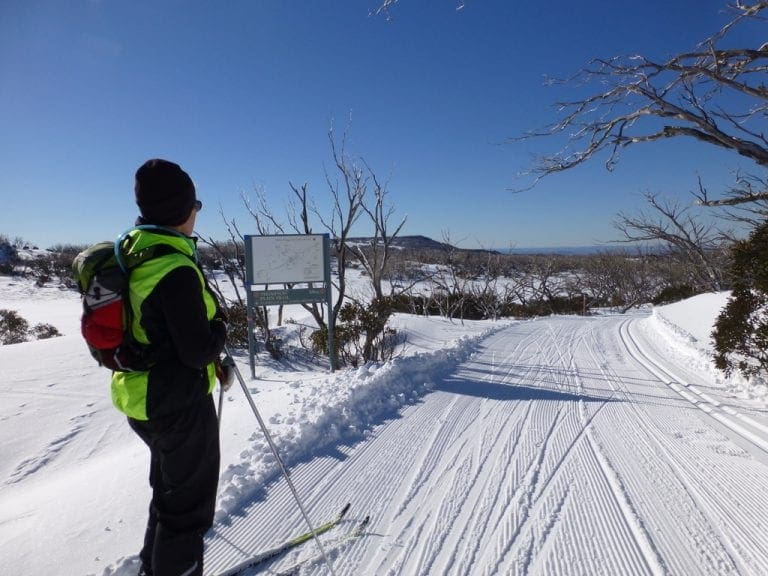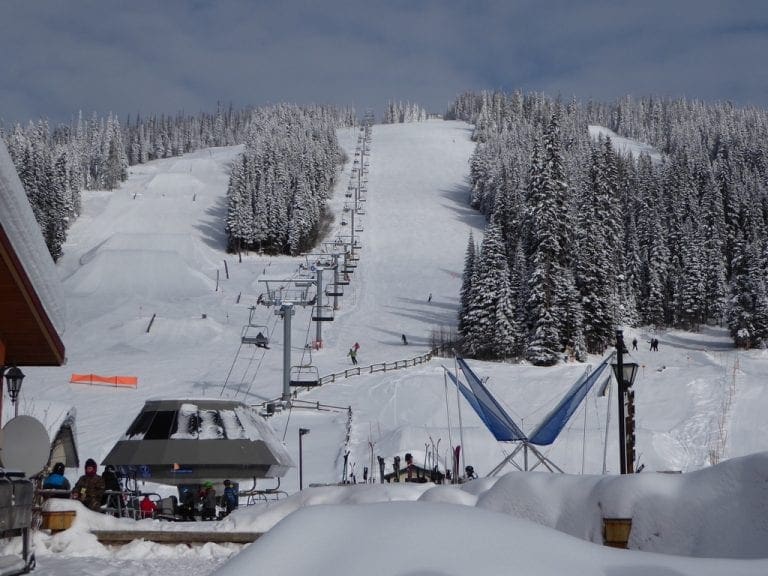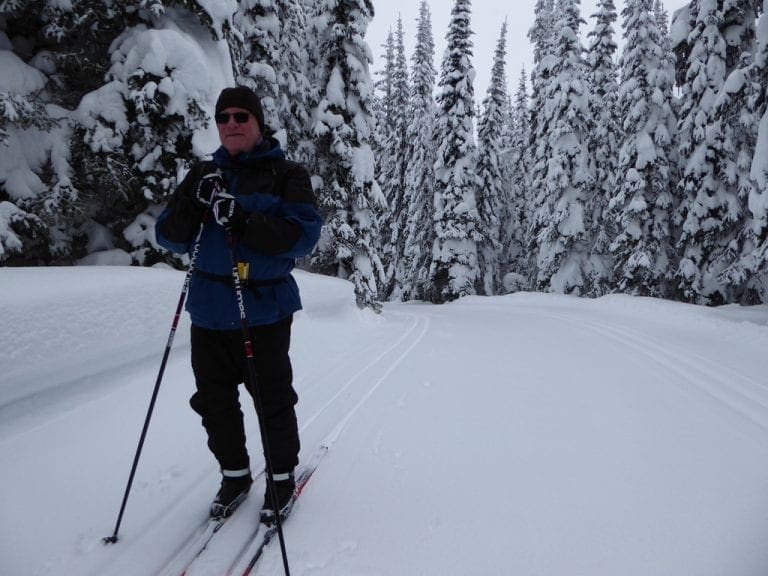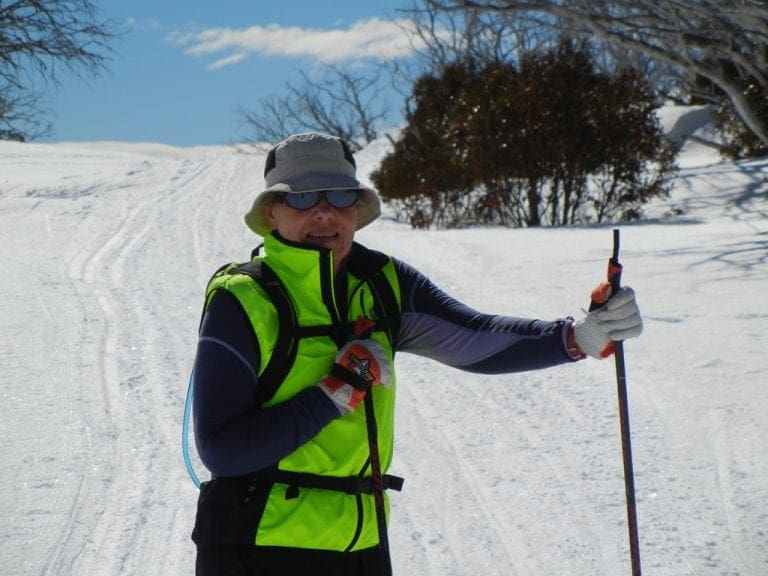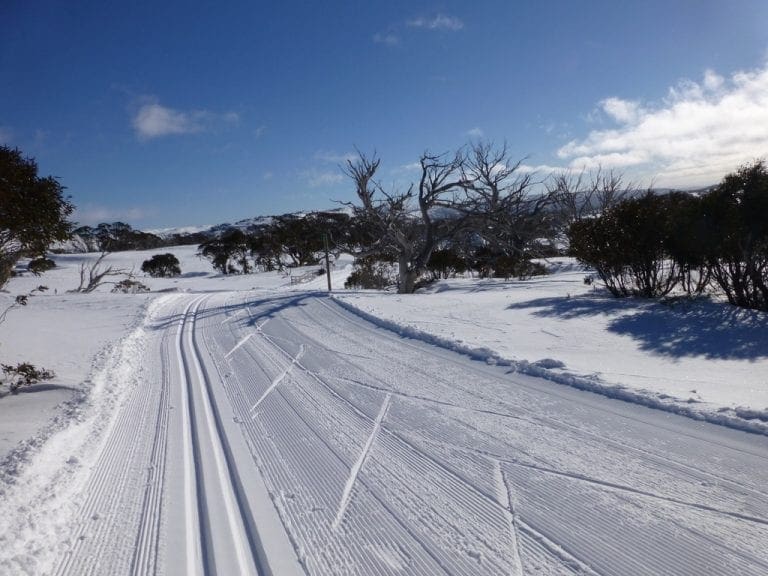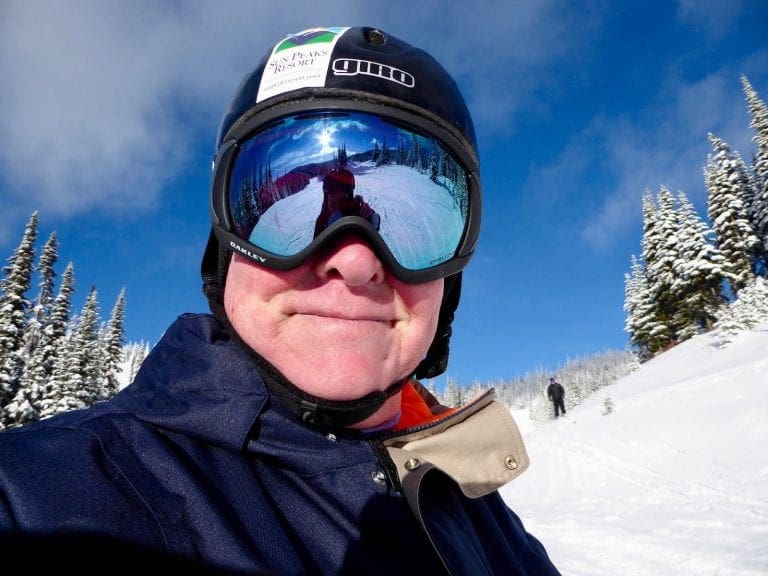Sun Peaks skiing 2017 – Week 1
Tues 17 Jan 2017. Day 0. Shuttle out to the airport. Checked through with no issues at all – 2nd in the queue. All too easy. Plane took off on time and then began the horror of the Boeing 787 seat for 15 hours. I could not get comfortable at all and did not sleep. Landed on time at Vancouver and painless through immigration. Our bags had been checked through to Kamloops, so we did not even have to clear customs – and that did feel odd. Quite a walk down to gate C42 for Kamloops. The fight took off on time and I slept all the way to Kamloops. The river is frozen over and quite a good scattering of snow all around Kamloops. When we did not land as expected, the pilot came on to announce that a truck was stuck in the snow at the end of the runway and we had a small tour down the valley while they towed it out. Picked up by the shuttle with a driver who liked to entertain with tall stories.
Dropped off at Cahilty Lodge and it felt like coming home. I do like it here. Met Nancy and Al in the lobby. A good cover of snow throughout the village. A trip to the store for supplies and unpacked in just a few minutes. Extremely tired and suffering from sleep deprivation.
Wed 18 Jan 2017. Day 1. An excellent night’s sleep. Then, the search to select the right clothes to wear outside – which we got right – not too cold. It is about -3ºC in the village. We bought our season passes for Nordic skiing – they reminded us that we had not been here since 2009. We skied for just on 2 hours which completely wore me out. The lesson, again, is that nothing prepares you for Nordic skiing except Nordic skiing. Though I’m very glad we did as much prep as we did.
The snow is fantastic and while we were out, a further 5 cm fell on us. Excellent. Came home, had lunch and slept for 2 hours. I like Sun Peaks a lot. The photo left is a good example of the cross-country track – as wide as a road, with classic tracks on either side (keep right) and skating in the middle. I’m going up the right hand side in the classic tracks and Helen is stopped in front.
For those who have forgotten, Sun Peaks is the 2nd largest ski resort in Canada (after Whistler/Blackcomb) and has numerous awards for its alpine skiing trail layout. Consistently good to excellent snow. Groomed black runs. The best green (beginners) runs I’ve ever seen and they link with a great selection of blue (intermediate) and black (advanced) runs – which means people of different levels can go up on the chair together and come down their chosen runs.
Another excellent feature is that there are very few people here – so mostly there is no waiting for a chair lift. Which can be a good or a bad thing depending on how exhausted you are from your 500-600m vertical run.
We will explore the Nordic Tracks.
Thur 19 Jan 2017. Day 2. A good snowfall overnight. We skied for 2:35 hours today. Quite a good run out along the McGillivray Lakes trail and twice down the Black Bear (blue) run. Not quite as exhausted today as yesterday – managed to keep my heart rate less than 150BPM for most of the time – and that helps.
Looking back on the extensive prep, I think I should have spent more time on foot strength.
Saturday 21 Jan 2017 Day 4. Day off. Lolled around like dead whales. This little fellow and friend cruise the window ledges for
goodies – in this case bread.
I wrote a little python program to generate Sudoku puzzles. It helps split up time reading and watching Oz open.
Sunday 22 Jan 2017. Day 5. Classic skied from the top of the Morrissey Chair lift down Holy (F@#king) Cow then along Great Grey and Vista back to the village. 2:30hours. Max heart rate 146BPM (much better). That made 10hours and 6,000 kcal for the week. 6,000 kcal! That is almost as much as a Big Mac. Snow at the top was absolutely perfect and great all the way down.
Very few people out though some skaters going up! Holy F Cow. Somewhere on the Nordic map it talks about the run down from Morrissey as the only lifted Nordic trail in Canada. A excellent run down along an old logging road – nothing too steep yet certainly down. Very enjoyable. An outdoor hot tub today followed by Cahilty Sunday drinks. Met the GAS group (Grumpy Asian Skiers). Good fun.
Monday 23 Jan 2017. Day 6. A repeat of yesterday plus a Black Bear because it was all a bit easy. An extremely enjoyable ski. Every day has been better than the one before. In by noon.
Tuesday 24 Jan 2017. Day 7. Temp has dropped to -5ºC in the village and -8ºC at mid-mountain. For us, a repeat of Day 5. Classic skied down Holy F Cow from the top of Morrissey then Great Grey and Vista to return to the village. Outdoor hot tub. Gets better every day.
Nordic Trail Map
Sun Peaks Webcams
Sun Peaks Resort Website
